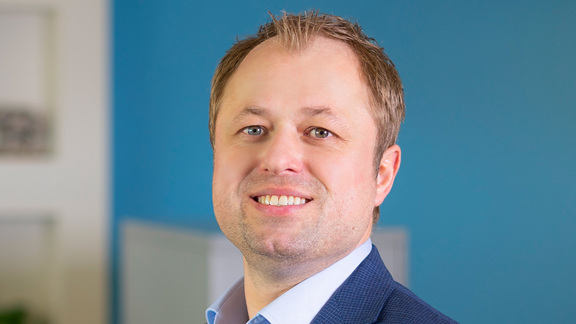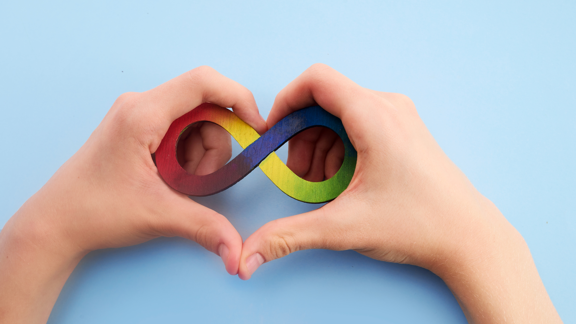Content on this website may not be accurately translated due to the limitations of the translation software from Google Translate. The official text is the English language version of the website. Any discrepancies or differences created in the translation are not binding and have no legal effect. If questions arise in relation to the accuracy of the information mentioned on the translated website, please refer to the English version of the website.
Course correct for a sustainable future


In business, it’s critical to have a clear vision and goals. You then need to define clear strategies to attain your goals with the best available information at that time. However – to be successful, you must be agile to adapt and refine both your strategies and goals as the world around you changes. Circumstances change. New information is discovered. New knowledge is developed. We have to adeptly take this new information into account and adjust our course to get to our goals in the most effective and efficient way. If we don’t adapt, we’ll end up off-course and achieve a goal that is no longer relevant in today’s world.
Many businesses’ sustainability goals were defined years ago. In the meantime, our knowledge about climate change has improved. The goals, however, have arguably not kept up. We all want to stop climate change. That is clear, but how we get there may need to be adjusted so we achieve our ultimate goals faster.
Many large global companies and brands have made bold commitments when it comes to reducing material, ensuring the material they use is recyclable and recycled. These are all great actions. It’s understandable why companies have quantified their commitments into recycling-related goals. It’s a term recognized by most consumers and makes us all feel like we are being pro-active and making the right choices. There was a movement in the 1970s that put the spotlight on waste and landfills which had grown out of the post WWII “use-it-and-throw-it-away” model of consumption. The movement gained momentum through advertising and public-private coalitions. We all got the message that recycling was important and that message has stuck with us.

That’s a good thing, but we now know much more about how recycling works, what it takes to make it work better, and how recycling can mean very different things for different materials. Recycling is far from the simple panacea that the advertising spots of the 1970s wanted us to believe. It’s complex and it takes work. It’s time to take on that complexity and take recycling to the next level – circularity. That requires a sense-check of existing sustainability goals.
Many global and well-respected consumer packaged goods and retail companies proudly communicate that their packaging material should be 100% recyclable by a certain date. These are admirable and bold goals that definitely push us in the right direction, but let me be the proverbial fly in the ointment.
Let’s say your packaging material is the “right” kind of plastic that actually can be recycled. Great, you can now correctly state that your packaging is 100% recyclable, but it doesn’t take much poking before a hole appears in the neat communication story. How many times can your packaging be recycled before it is incinerated or ends up on a landfill or in our waterways? The truth is that most plastics in packaging can only be recycled up to around 3 times before it degrades so much that it cannot be used any longer. Many composite packaging materials like a liquid carton can in theory be recycled, but are so difficult and non-economical to separate that it is very often downcycled, shipped to a landfill or incinerated. For this type of complex composite packaging, there is a significant difference between what can be recycled in theory and what is actually recycled in practice. To be blunt, the “100% recyclable packaging” goal may be easy to communicate, make consumers feel good, and give your brand a healthy green glow, but it may not do much to preserve our environment.

Tough message, but we can easily take this goal to the next level. Instead of focusing on recyclability, measure the circularity of the material in your packaging. There are permanent materials out there that recycle forever without degrading in quality. These materials, like metal and glass, stay in the circular loop forever and there is a big difference between 1-3 times and forever. In addition, these materials, especially metal, enjoy very high actual recycling rates. For example, 84% of steel packaging in Europe are recycled. That means these materials have a much better shot at staying clear of an incinerator or a landfill.
Another goal of many big brands is to increase the amount of recycled content in their plastic packaging. Some have the ambition of reaching 100% while others have committed to somewhere between 25% and 50%. Sounds good, but the core recycling question remains. How many times has, and will the plastic content be recycled before starting to emit greenhouse gases as it decays in a landfill?
Using recycled content in plastics is a step in the right direction, but we need to take this goal to the next level as well – for two reasons. Firstly, as mentioned, plastics can only be recycled less than a handful of times before it degrades beyond usability. It’s simply not a long-term solution that will have real sustainable impact. The second reason is that plastics are not recycled enough to provide an adequate supply of recycled material. The recycling rate for plastics is a paltry 9%, which means there is not enough plastics to go around for brands to reach their goals.
We need to shift the focus away from plastics altogether. Recycled content in and of itself is not a bad thing, but it depends on the material. Again, permanent materials, like metal and glass, recycle forever without degrading during the process. As mentioned, they are circular and stay in the loop forever when recycled.
A third focus area for brands is to reduce the weight or amount of packaging material. Another good goal that has positive knock-on effects on greenhouse gas emissions throughout the supply and value chains, waste, and very often cost of packaging.
I’m all for keeping it light, but we still need to scrutinize the choices this focus forces brands to take. Paper and plastics are generally lighter than metal and glass. I can’t argue with that, but that’s not the full story. I know I will sound like a broken record, but since permanent materials like metal recycle forever, their circular cradle-to-cradle carbon footprint is usually lower than that of plastics and liquid cartons. That’s because the life-cycle is infinitely longer for metals. The materials stay in the loop and help enable a circular economy. My colleague, Jenny Wassenaar, wrote a great white paper outlining the evolution of life cycle assessments and their differences.

In addition, major progress has been made when it comes to light-weighting of metal. For example, the Trivium R&D team in Argentina has developed an aluminum alloy that is 25% lighter than pure aluminum while retaining all its strength. Aluminum is an especially strong contender when it comes to weight. For example, an aluminum bottle can easily be 6 times lighter than a comparable glass bottle and be competitive with plastics when it comes to weight. Light-weighting is one of the reasons that many brands traditionally using glass are looking to aluminum. Wine and edible oils are two examples.
Don’t get me wrong, I am very happy that companies around the world are taking real steps to combat climate change. My call to action is that we need to refine our course to account for new knowledge and development.
Many of the big brands’ sustainability goals need to move on from “just” recyclability to circularity. The goals need to move from single use cradle-to-grave to the circular cradle-to-cradle life cycle assessments which more accurately reflect the environmental impact of a material over its full lifespan.
If we don’t evolve our goals, we will not effectively combat climate change. We must be adept at evolving as the future of our planet depends on it.



